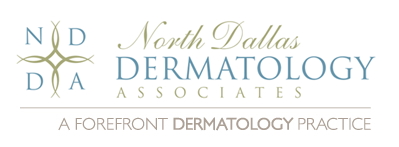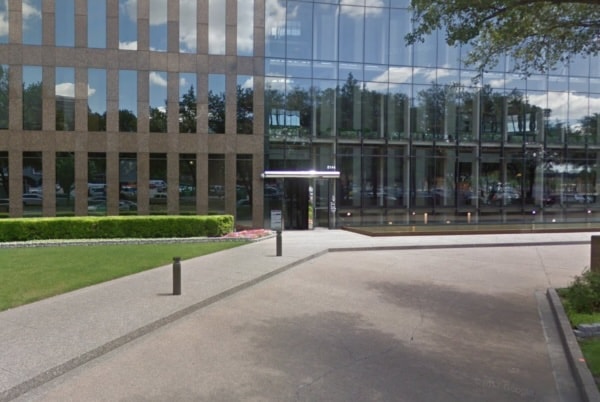Autoimmune Diseases
Autoimmune diseases occur when the body’s immune system mistakenly fights against its own tissue. Various versions of the condition can affect both skin and internal organs. At North Dallas Dermatology Associates, our skilled, board-certified dermatologists have experience diagnosing and treating a wide range of autoimmune diseases of the skin.
To learn more about autoimmune skin conditions and to schedule an appointment with one of our dermatologists, just call North Dallas Dermatology Associates at (214) 761-8524!
TYPES OF AUTOIMMUNE DISEASES
ALOPECIA AREATA
Alopecia areata is triggered by the immune system attacking the hair follicles, leading to hair loss on the scalp, the rest of the body, or both. Most commonly, hair loss occurs in small patches, but in some people it can be much more extensive. People with alopecia are generally otherwise healthy, but the loss of hair can cause significant distress.
Alopecia is impossible to predict; in fact, the only thing that is predictable about it is that it is unpredictable. For example, some people may only lose a few patches of hair that grow back, while others may continually lose and regrow hair. In other cases, a person may lose all of his or her hair. There are no treatment options to cure underlying alopecia, but doctors have found some focused medical treatments that may help hair grow back. When considering alopecia care, your dermatologist will discuss treatment and management options with you.
BULLOUS PEMPHIGOID AND PEMPHIGUS
Bullous pemphigoid, or BP, is an autoimmune disorder in which antibodies attack skin tissue, causing blisters. This blistering rash ranges from mild to severe, with blisters occasionally becoming large and prone to infection. BP may affect small or large patches of skin, and can occur at any age, although it is more common in the elderly.
Pemphigus is a similar autoimmune blistering disease, that causes more superficial blisters, which break more easily than those of BP. In addition, the condition is often more widespread, more frequently involves the mouth and is often harder to treat than BP.
BP and pemphigus can be treated effectively with oral anti-inflammatory “antibiotics”, oral steroids, or a combination of oral steroids and immune suppressive agents. While these treatments are aimed at managing symptoms rather than targeting a root cause, many people find that BP and pemphigus completely clear up over time, although they may still experience occasional flare-ups.
DERMATOMYOSITIS
Dermatomyositis is an inflammatory disease that causes distinctive purple-red colored skin rashes on the face, eyelids, knuckles, elbows, chest, back, and knees, as well as muscle weakness, and in severe cases, muscle atropy. The muscle weakness often affects the neck, upper arms, shoulders, hips, and thighs, and may cause difficulty swallowing or talking. The disease is rare and currently has no known cure, similar to other autoimmune disorders in which the immune system mistakenly attacks healthy cells. Dermatomyositis can lead to other conditions, such as scleroderma, lupus, and rheumatoid arthritis, as well as cardiovascular disease, lung disease, and cancer.
There are numerous treatments available to alleviate and manage the symptoms of dermatomytosis. Oral steroids, immune-suppressive agents, and antimalarial medications have been found to help, as well as physical therapy, speech therapy, and dietitian assessment to learn about foods that are easy to eat when chewing or swallowing becomes difficult.
LUPUS
Lupus is an autoimmune disease that causes the body’s immune system to mistakenly attack the joints, kidneys, blood cells, skin, heart, lungs, and even the brain. The disease can be difficult to diagnose as the symptoms are similar to other conditions. The most common sign of the disease is a butterfly shaped rash across the cheeks, however, it does not occur in all cases. The most common symptoms include persistent fever, fatigue, shortness of breath, chest pain, sunburns or lesions from sun exposure, headaches, as well as pain, swelling, and stiffness of the joints.
There is currently no cure for lupus, however, the signs and symptoms may be alleviated with medications, such as anti-inflammatory drugs, antimalarial medication, steriods, and immunosuppressants. The symptoms typically flare up and subside and treatment will need to be carefully managed by a professional.
SCLERODERMA
Scleroderma causes abnormal thickening of skin and connective tissues. This skin is hard and tight and is a result of the immune system mistakenly stimulating fibroblast cells to produce too much collagen, which leads to hard, tight, thick skin and can even result in similar changes in internal organs as well. Scleroderma is more common in females, but can affect people of any age or gender.
The condition is diagnosed through medical history, physical exams, lab tests, and, sometimes, skin biopsies. It can be difficult to diagnose unless a person has typical symptoms and rapid skin thickening. Early signs may include Raynaud’s phenomenon, abnormal color change, white, blue, then red as well as numbness and tingling of the fingers upon cold exposure. There is no cure for scleroderma, but there are various treatment options aimed at relieving symptoms of the disease. Consult with your dermatologist to get an accurate diagnosis as well as a treatment plan customized for your symptoms and lifestyle.
VASCULITIS
Vasculitis is an inflammatory disease that causes the blood vessels to weaken, narrow, or scar, which can restrict blood flow and ultimately damage tissue and organs. It is a rare condition that is also known as arteritis or angiitis, and may affect only the skin or a particular organ, or it may target a variety of areas. The most common symptoms of vasculitis include headache, fever, fatigue, general aches, weight loss, rash, night sweats, and numbness or weakness, or loss of blood flow in a limb. There are several types of vasculitis that affect different parts of the body or nervous system.
Treating vasculitis and any underlying conditions related to the disease often involves stopping inflammation and preventing the symptoms from recurring. The overall treatment requires prescription medication, such as corticosteroids and immunosuppresants, as well as physical therapy, a healthy diet, and routine doctor visits and vaccinations.
VITILIGO
The cause of vitiligo is not known, but it is believed to be an autoimmune disease in which the immune system attacks melanocytes, which are the cells that create pigment in the skin. When these cells are destroyed, pigment is lost and white patches appear. These can occur anywhere on the body, but are most common in areas that are exposed to the sun, such as around the mouth, the eyelids, the nostrils, and the navel. The groin and armpits are also common areas for vitiligo to occur.
Vitiligo can be treated in a variety of ways that aim at restoring color to the affected area. Topical and oral medications, skin grafts, light treatments, and cosmetics to cover white patches are all common treatments. Your dermatologist will work with you to determine the best type of treatment according to the size and number of white spots, what treatments appeal to you, and how badly your vitiligo bothers you.
SCHEDULE AN AUTOIMMUNE DISORDER CONSULTATION TODAY
If you think you may be suffering from an autoimmune disease of the skin, don’t hesitate to contact the board-certified dermatologists at North Dallas Dermatology Associates to make an appointment. Call (214) 761-8524 today.





